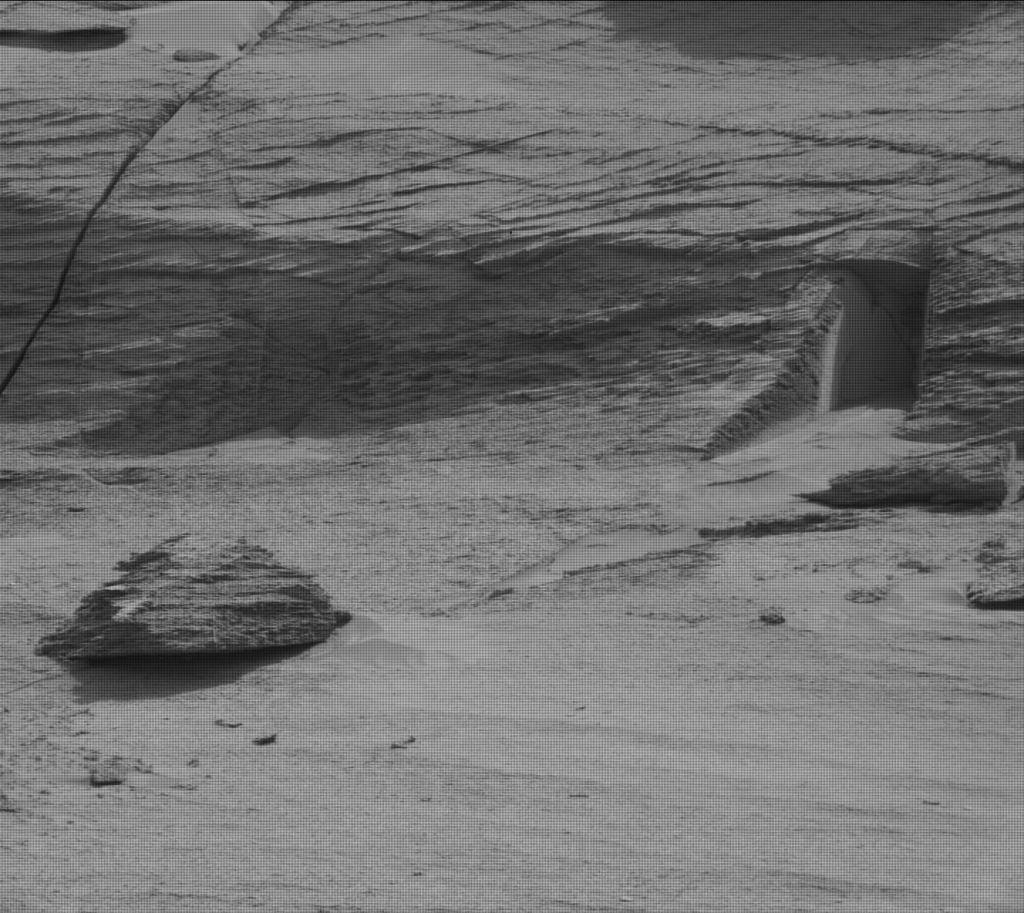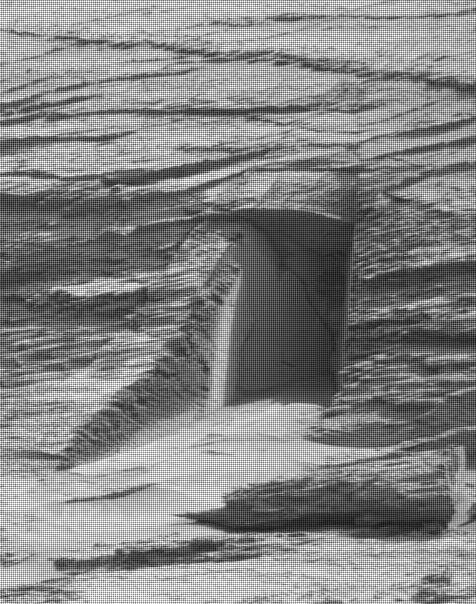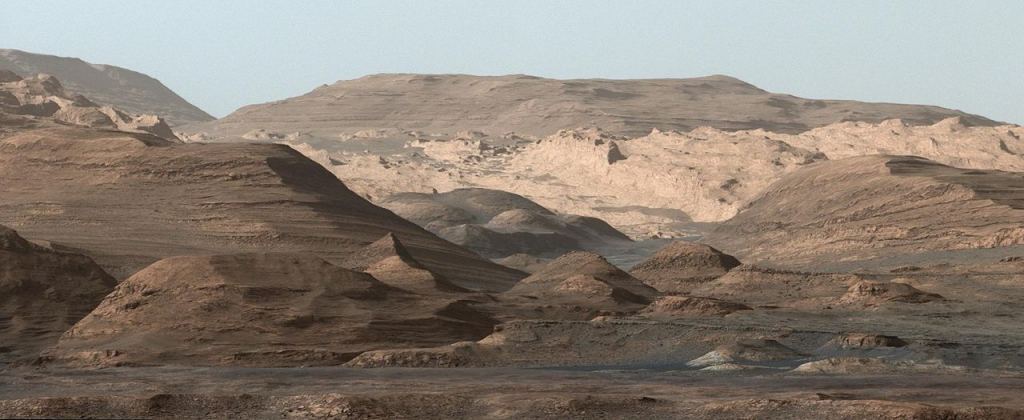
There is a doorway in the side of some rock on the flank of Mount Sharp, but it is not one of the geological features on Mars. There is no doorway on Mars that was created by aliens. There is a break in the rock that looks like one. The fact that it isn't a real doorway hasn't stopped a lot of speculation over its appearance in an image snapped by the MastCAM on the Curiosity rover. The odd-looking feature is a result of a fractured sand that has hardened into rock over millions of years. It looks like a door because of a combination of light, shadow and viewing angle. It's not.

It's not the first time an odd thing has caught people's attention on Mars or other places in the solar system. The Face on Mars furor is something people are familiar with. It was nothing more than an eroded mesa in the Cydonia region. But, that didn't stop a small cottage industry of writers and speakers from pushing the idea that ancient aliens built it as a signal to us. There are no faces on Mars according to missions that imaged the surface. There aren't any statues or spoons. The objects that people thought they saw were rocks or rock formations.

Rock formations, river beds, volcanoes, and craters are some of the cool features on Mars. They provide more than enough exciting science, so we really don't need mysterious visions that stem from the human tendency to see shapes or ambiguous visual scenes. The technical term for that tendency is pareidolia. We covered that term in stories about the Moon and other interesting objects in space.
The rock feature on Mars gives us a chance to do a quick review of what the Curiosity rover has helped scientists discover. It is currently exploring the central mountain. There are some scenes that are familiar to us, and that gives us a chance to understand ancient and current Mars, and how it got the way it is.
There are a lot of sandstones and other rocks on Mars. There are similar rocks on Earth. Understanding how they formed here opens the door to understanding how they formed on Mars. Both cases involved erosion by water and wind. We can get a good feel for what is happening to the rocks on Mars by observing them here at home.
If you're familiar with sandstones here on Earth, you know they can break easily into shards. Anyone with a sandstone sidewalk knows how fragile it can be. It isn't a surprise to see similar rock fractured and broken on Mars. We can use the attention it got to learn more about Mars.
The Greenheugh Pediment is located on Mount Sharp. The image of the doorway on Mars was caught by the MastCAM, and it showed a series of sand dunes. They were deposited by wind action. Something caused the rock to break in a few places. It was probably a little Marsquake or some other natural process. The blocks of rock left behind a door.
The Greenheugh Pediment is part of Mount Sharp, which is a high mound of rock. The topmost layers of sandstone have been studied. There are clay-bearing rocks in the region. The evidence for mudstones was found as it began its journey up the mountain.